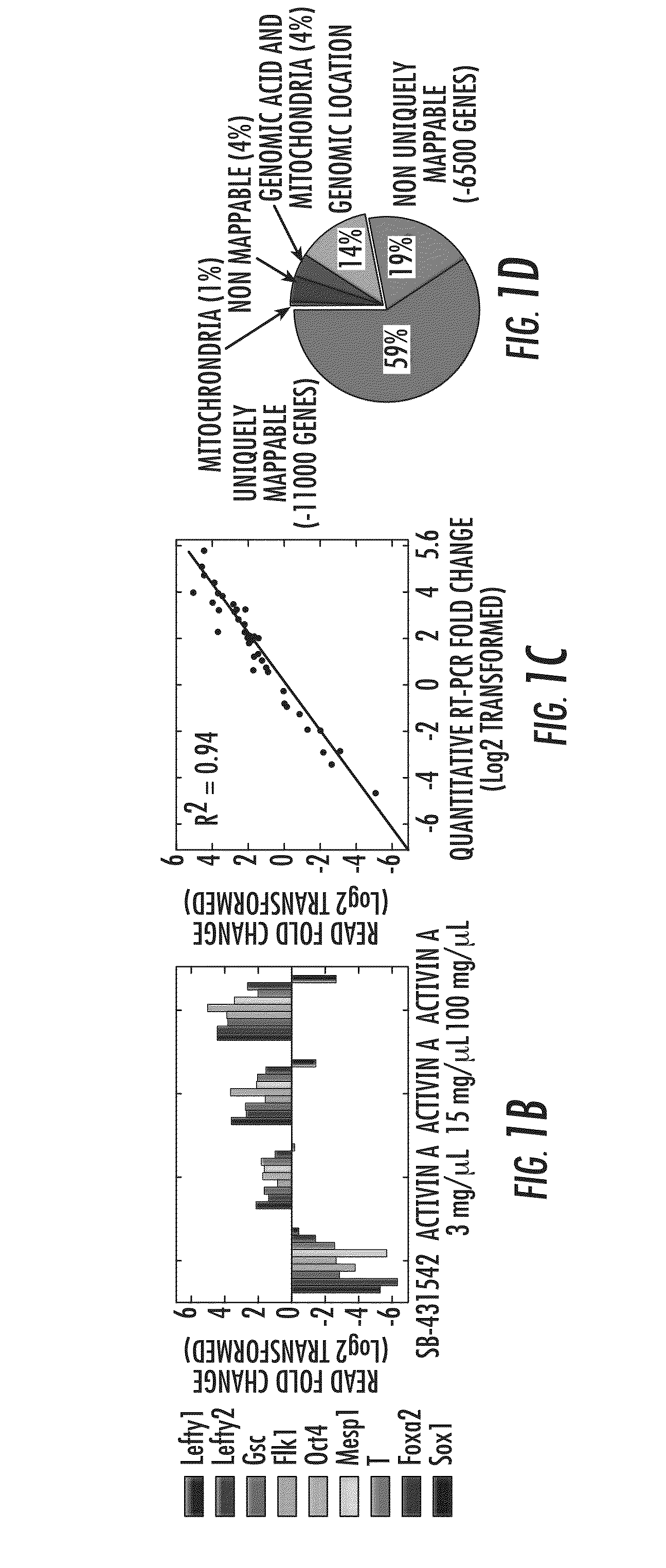High Resolution Analysis of Mammalian Transcriptome Using Gene Pool Specific Primers
a transcriptome and gene pool technology, applied in the field of materials and methods for analyzing mammalian transcriptomes, can solve the problems of limiting the application of starting materials, impracticality of getting such large amounts, and reducing the number of primer dimers, so as to optimize the amplification of target sequences, reduce mis-priming and primer dimerization, and low expression levels
- Summary
- Abstract
- Description
- Claims
- Application Information
AI Technical Summary
Benefits of technology
Problems solved by technology
Method used
Image
Examples
example 1
Quantitative Transcriptomics Using Designed Primer-Based Amplification
[0036]Quantification of low abundant transcripts from limited amounts of starting material has remained a challenge for RNA-seq at current sequencing depths. Here, the inventors describe an informatics-based strategy that uses a defined set of heptamer primers to amplify the majority of transcripts expressed at moderate to low levels while preserving their relative abundance. The strategy reproducibly yields high levels of amplification necessary for sequencing-library generation from low starting material and offers a dynamic range of over five orders of magnitude in RNA concentrations. The method shows potential for selective amplification of transcripts of interest enabling better quantitation and multiplexing for increased throughput and cost effectiveness. The applied this approach to study cell lineage segregation in embryonic stem cell cultures, which models early mammalian embryogenesis. The amplification ...
PUM
| Property | Measurement | Unit |
|---|---|---|
| Fraction | aaaaa | aaaaa |
Abstract
Description
Claims
Application Information
 Login to View More
Login to View More - R&D
- Intellectual Property
- Life Sciences
- Materials
- Tech Scout
- Unparalleled Data Quality
- Higher Quality Content
- 60% Fewer Hallucinations
Browse by: Latest US Patents, China's latest patents, Technical Efficacy Thesaurus, Application Domain, Technology Topic, Popular Technical Reports.
© 2025 PatSnap. All rights reserved.Legal|Privacy policy|Modern Slavery Act Transparency Statement|Sitemap|About US| Contact US: help@patsnap.com



